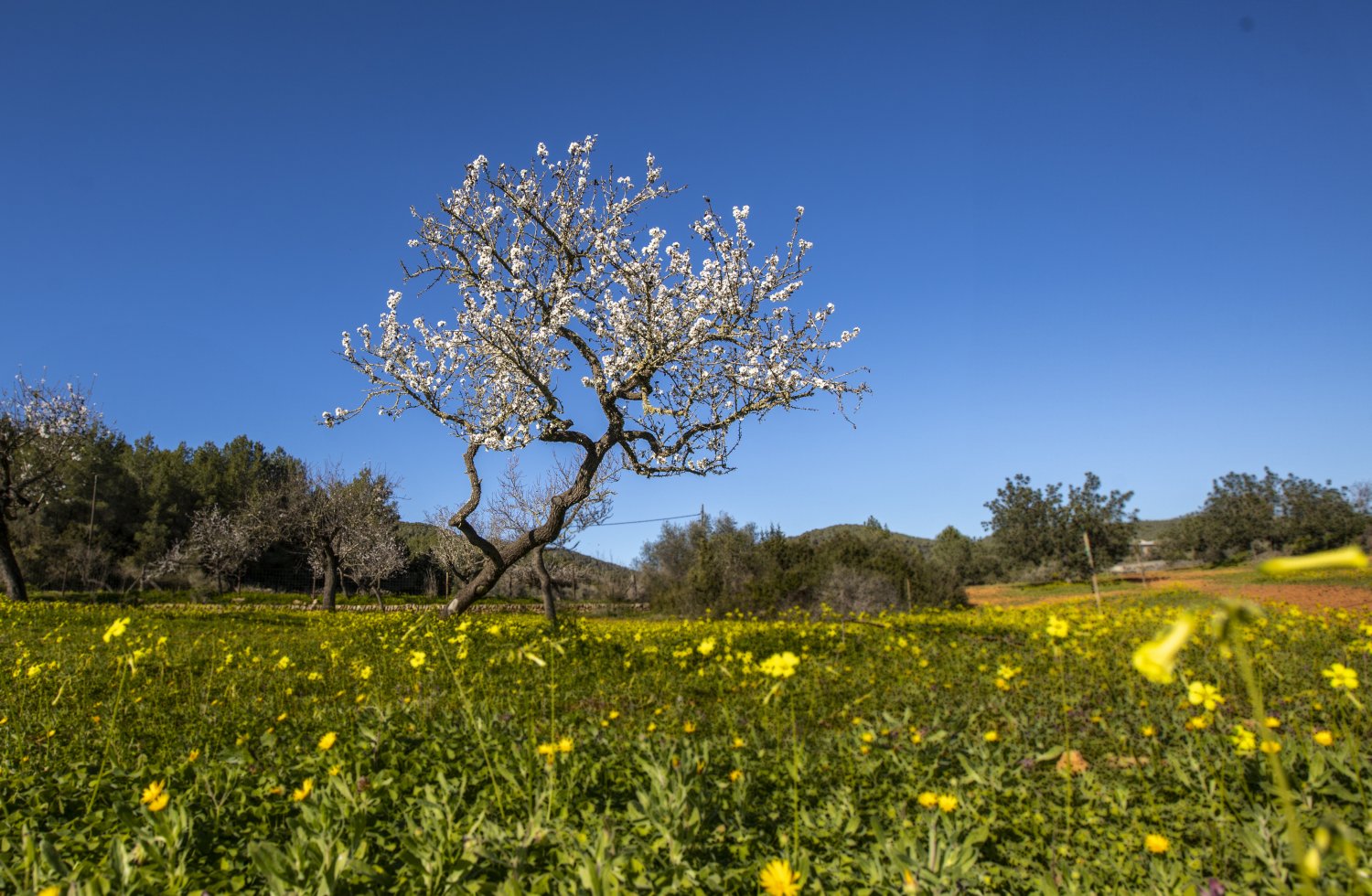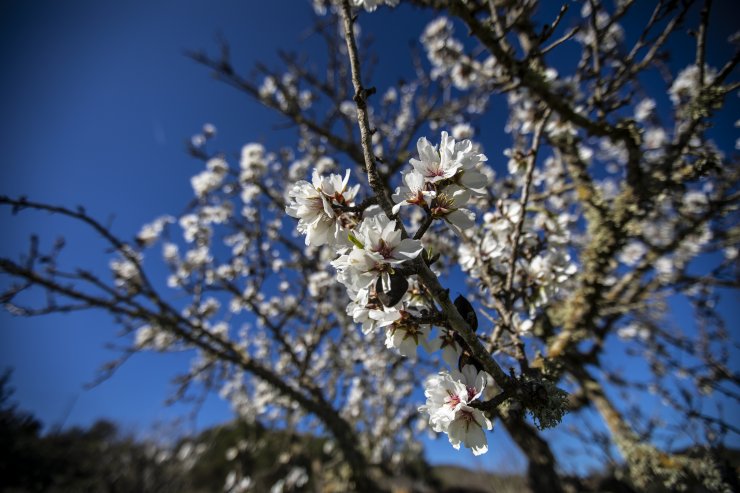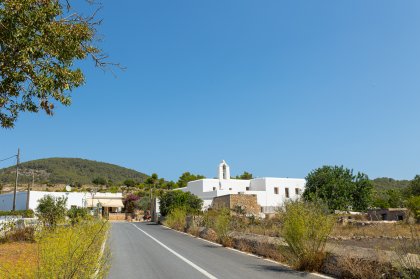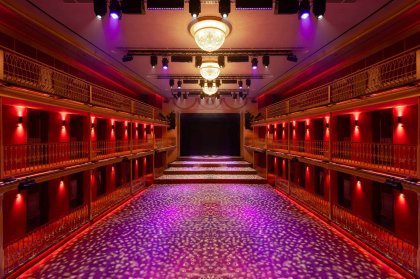Image courtesy of Helen Boast for IbizaPreservation
Winter visitors to Ibiza will no doubt have noticed the pretty pink and white flowers adorning the trees along many a roadside. These are the island’s famous almond trees in blossom, a spectacle that can usually be seen in the months of January through to March, depending on the weather.
The best place to take in the sight is usually at Pla de Corona in the village of Santa Agnès, up in the north-west of Ibiza, where you can wander freely through the groves to appreciate the blossom, although the recommendation comes with a friendly reminder not to remove any flowers or branches from the trees, please! You may also see some police up there, particularly at the weekends; this is nothing to worry about, just additional measures that have been brought in to try to protect the area from damage and control crowd levels.
Restoring the groves
Those who make the trip may also notice hundreds of smaller saplings where many of the large almond trees once stood. These are part of an initiative, funded by regenerative farming company Juntos and facilitated by our Ibiza Produce project, to restore the iconic groves to their former glory.
This is much needed because almond trees only have a life cycle of around 70 years and so need to be replaced every few decades. Since the advent of tourism in Ibiza, however, that’s not been happening as often as it should. Having been a cash crop for Ibiza’s farmers since possibly as far back as Phoenician times, in recent years over a third of the island’s groves have been lost and it’s estimated less than 100 hectares of productive trees now remain.
But there is good news: thousands of new trees are being replanted throughout Ibiza, thanks to various initiatives by committed farmers and cooperatives, and within the next five years many of these should start to bear fruit. Pilot projects are underway to test out how different almond varieties fare according to soil types and watering techniques, with the goal of replicating successes across the island.
It’s important to remember too that the almond trees of Ibiza have more than just a decorative function. As well as being pretty to look at, they perform a vital environmental role. Often planted on terraced hillsides or surrounded by stone walls, they help to prevent soil erosion and water run-off. Their leaves, fruits and branches provide food and shelter for local wildlife. And of course, like all trees, they act as a carbon sink, helping to absorb harmful CO2 emissions from the atmosphere.
Image courtesy of Helen Boast for IbizaPreservation
A hard nut to crack
Although almonds have been a part of Ibiza’s heritage for centuries, it can be surprisingly hard these days to come by nuts actually grown on the island. Put that down to stiff competition from mass producers in places like California and even other parts of Spain, where yields are greater and costs are lower.
In order to help increase Ibiza’s almond output, we also invested in a cracking machine for the San Antonio farmers’ cooperative, meaning the fruits can now be de-shelled more quickly and easily, commanding a higher return. If you’d like to support Ibiza’s almond farmers, you can do so by making a purchase direct from the San Antonio Cooperative or from Ecofeixes.
Almonds are highly nutritious and packed full of antioxidants, protein, fibre and healthy fats, plus vitamins and minerals. Ibiza’s almonds are even more so, as they are grown with less water and are therefore more concentrated. So, by buying and eating these locally grown goodies, you are contributing to your own health as well as the recovery of one of the island’s most traditional and iconic crops.
You can find out more about IbizaPreservation and donate towards their work by going to their website: ibizapreservation.org. You can also follow them on Instagram, Facebook and Twitter.
Check out Ibiza Spotlight's recommended eco-friendly businesses whilst you are here and help to support a greener, cleaner Ibiza and Formentera.









